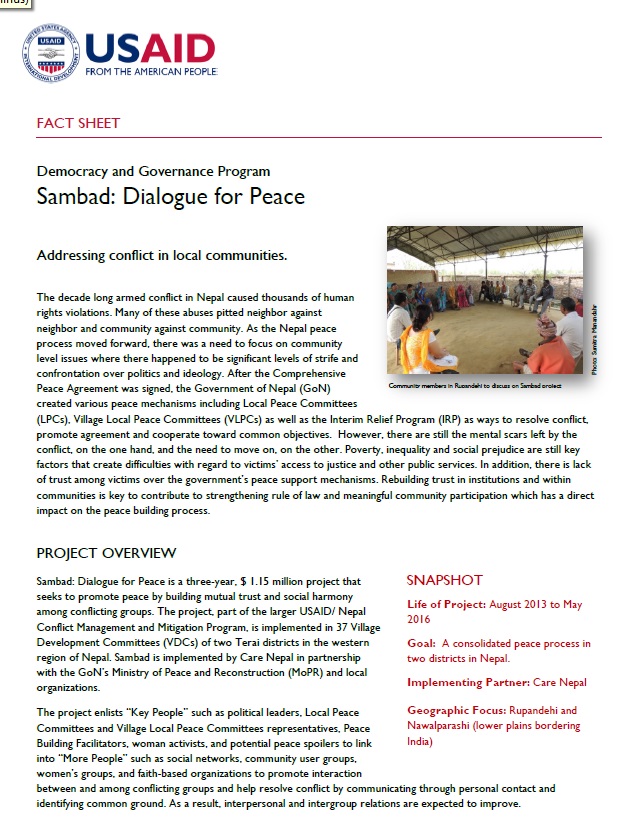The decade long armed conflict in Nepal caused thousands of human rights violations. Many of these abuses pitted neighbor against neighbor and community against community. As the Nepal peace process moved forward, there was a need to focus on community level issues where there happened to be significant levels of strife and confrontation over politics and ideology. After the Comprehensive Peace Agreement was signed, the Government of Nepal (GoN) created various peace mechanisms including Local Peace Committees (LPCs), Village Local Peace Committees (VLPCs) as well as the Interim Relief Program (IRP) as ways to resolve conflict, promote agreement and cooperate toward common objectives. However, there are still the mental scars left by the conflict, on the one hand, and the need to move on, on the other. Poverty, inequality and social prejudice are still key factors that create difficulties with regard to victims’ access to justice and other public services. In addition, there is lack of trust among victims over the government’s peace support mechanisms. Rebuilding trust in institutions and within communities is key to contribute to strengthening rule of law and meaningful community participation which has a direct impact on the peace building process.
Sambad: Dialogue for Peace ![]() (pdf - 181k)
(pdf - 181k)
PROJECT OVERVIEW
Sambad: Dialogue for Peace is a three-year, $ 1.15 million project that seeks to promote peace by building mutual trust and social harmony among conflicting groups. The project, part of the larger USAID/ Nepal Conflict Management and Mitigation Program, is implemented in 37 Village Development Committees (VDCs) of two Terai districts in the western region of Nepal. Sambad is implemented by Care Nepal in partnership with the GoN’s Ministry of Peace and Reconstruction (MoPR) and local organizations.
The project enlists “Key People” such as political leaders, Local Peace Committees and Village Local Peace Committees representatives, Peace Building Facilitators, woman activists, and potential peace spoilers to link into “More People” such as social networks, community user groups, women’s groups, and faith-based organizations to promote interaction between and among conflicting groups and help resolve conflict by communicating through personal contact and identifying common ground. As a result, interpersonal and intergroup relations are expected to improve.
Read More: Sambad: Dialogue for Peace Factsheet
Learn More








Comment
Make a general inquiry or suggest an improvement.